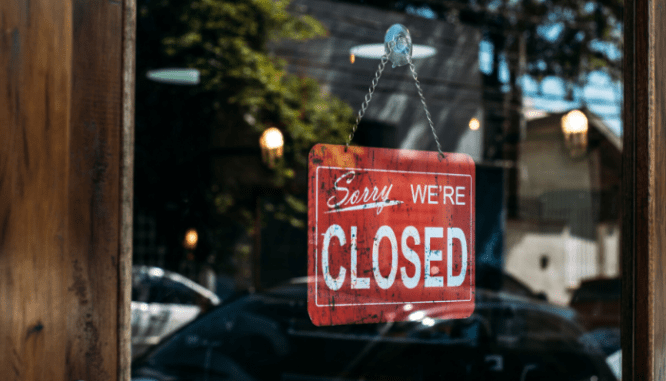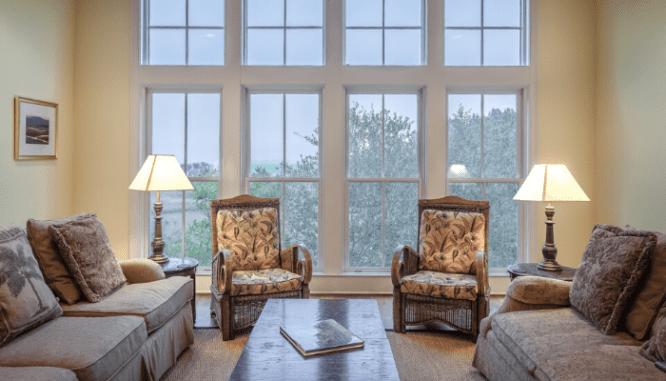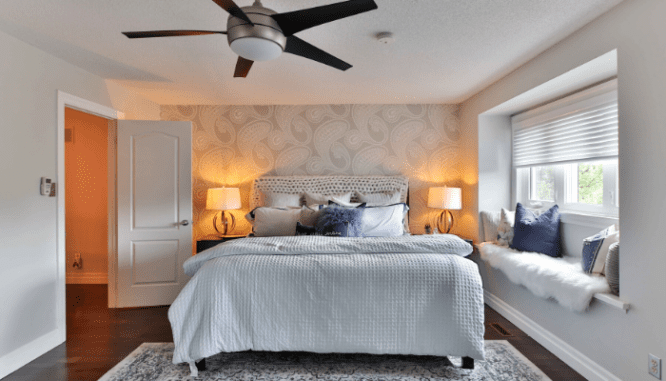How Coronavirus Mortgage Rates Affect Buyers, Sellers, and Owners
- Published on
- 8 min read
-
 Chelsea Levinson Contributing AuthorClose
Chelsea Levinson Contributing AuthorClose Chelsea Levinson Contributing Author
Chelsea Levinson Contributing AuthorChelsea Levinson, JD, is an award-winning content creator and multimedia storyteller with more than a decade of experience. She has created content for some of the world’s most recognizable brands and media companies, including Bank of America, Vox, Comcast, AOL, State Farm Insurance, PBS, Delta Air Lines, Huffington Post, H&R Block and more. She has expertise in mortgage, real estate, personal finance, law and policy.
It’s all over the news, and if you’re buying or selling a home, it’s likely all over your social media feed, too: The coronavirus (COVID-19) pandemic has brought mortgage rates to near historic lows.
Many Americans are eager to take advantage of these low rates. In the weeks following the U.S. spread of the coronavirus, refinance applications skyrocketed so astronomically that mortgage lenders had a hard time keeping up with the new demand.
In fact, many lenders were so overwhelmed, they temporarily stopped accepting mortgage applications all together.
So how do you know if now is really a good time to buy, sell, or refinance a home? We spoke to HomeLight’s head of Capital Markets, John Boyles, and top Michigan real estate agent, Gary Naeyaert, to break it all down.
Here’s what you need to know about the coronavirus and mortgage rates.

Mortgage rates and why they’re important
“A mortgage rate, also known as ‘note rate’ on a mortgage, is the interest rate that’s paid by the borrower” on the mortgage loan they take out from the lender, says Boyles.
Put another way: Your rate is what you’re paying over time to borrow money from a mortgage lender. Even when rates are low, the interest on a mortgage typically adds tens of thousands of dollars to the cost of your home over the life of the loan.
So, where does your mortgage rate come from? There are three major driving forces behind the rate you’re offered on any given day.
1. Your financial profile
Your rate is affected by your financial profile, including your credit score, your income, your debts and assets, and how much money you’ve saved up for a down payment. The higher your credit score is, and the more you’ve saved up for a down payment, the lower your interest rate will be.
2. The home
Your rate also factors in the type of property you plan to buy and how you’ll use it.
For example, investment properties and second homes can carry higher rates than primary residences. Manufactured homes can also come with higher interest rates.
3. Outside factors
There are a whole host of outside factors (also known as things beyond your control) that play into mortgage rates, which can shift on a moment-to-moment basis.
According to Boyles, these complex factors include:
- The health of the economy and stock markets.
- Federal interest rates.
- The price of mortgage securities: This is complicated, but in a nutshell, lenders typically sell loans on the secondary market so they can turn around and make another loan. The secondary market treats mortgage loans like bonds. When there are too many of these loans available on the market — perhaps caused by a flood of refinance applications — the price to acquire the loans falls, causing mortgage rates to increase.
- Current risk levels for lenders.
- The costs of servicing a loan.
- Demand from homebuyers.
- Demand from investors.
- Lender and third-party costs.

The connection between Federal Reserve interest rates and mortgage rates, explained
One of the biggest points of confusion when it comes to mortgage rates is how they’re related to Federal Reserve (or Fed) overnight fund exchange interest rates.
“The Federal Reserve manages our national monetary policy,” Boyles explains.
“Basically, they control the flow of money in and out of the U.S. economy. They set a baseline rate that most other rates are geared towards.”
“Baseline rate” is a key phrase here. Your mortgage rate will undoubtedly be higher than the Federal Reserve baseline rate, which is the interest rate for money that is loaned or exchanged between banks or other depository institutions. There’s no such thing as a 0% mortgage rate, even if the Fed interest rate is 0%.
Why? Because it costs money to produce mortgages, and those costs get baked into your interest rate.
How coronavirus is affecting mortgage rates
Mortgage rates were already extremely low before the coronavirus arrived in the U.S. For example, 30-year fixed mortgage rates averaged 3.47% in February of 2020, compared with 4.37% in February of 2019.
In March, with the coronavirus bearing down on the U.S., the Federal Reserve dropped interest rates to nearly zero. This caused mortgage rates to hit a low of 3.2%.
Since March, mortgage rates have been bouncing up and down, reflecting shifts in the mortgage market and its delicate ecosystem of servicers, investors, insurers, securities, and third-party players.
Coronavirus-related factors affecting mortgage rates
Many mortgages are in forbearance
Around 7% of mortgages are in forbearance right now, thanks to rampant joblessness and people utilizing the CARES Act, which allows financially struggling homeowners with government-backed loans to go into forbearance for 180 days during the crisis.
This has created the largest surge in mortgage non-payments in history. These numbers are far worse than lenders anticipated, and the uncertainty has given mortgage companies pause when evaluating applications. The fewer people making mortgage payments today, the harder it’s going to be to apply for a mortgage for the foreseeable future.
Lenders can’t handle the current volume
Refinance applications have flooded many lenders, which has caused some to raise mortgage interest rates, and others to stop taking mortgage applications temporarily. When lenders get more applications than they can handle, they tend to raise rates to moderate demand while they clear the pipeline.

Investors are hesitant
With so much uncertainty in the air, investors are hesitant to buy mortgage bonds.
Why? The flood of refinance applications can devalue mortgage bonds. Plus, investors see current forbearance numbers and worry that many more homeowners will default as the economic ramifications of the coronavirus play out.
Still, even as mortgage rates fluctuate, they remain very low. The real issue, right now, is accessibility for those hoping to buy or refinance.
“We’re seeing a lot of confusion and a lot of mixed messages about the availability of mortgage funds,” explains Naeyaert, a top agent in Michigan. “When the Federal interest rate was lowered to almost zero, that led people to believe that perhaps mortgage rates would go down to close to zero. I think that was an over-optimistic reaction.”
In fact, the opposite seems to have happened. The purse strings are tightening on government-backed loans.
Lenders are tightening mortgage guidelines
With so much uncertainty in the air, mortgage companies are hedging their bets with tightened lending guidelines and increased rates for those carrying any kind of financial risk. That basically means it’s harder to get a mortgage right now.
It also means those super-low rates you’re hearing about may not be available to you.
Lenders are requiring higher credit scores — and strong evidence of career stability — before they’ll fork over a loan.
The idea behind those tightened guidelines is relatively simple: Lenders are becoming more risk-averse to prevent another housing market crash like the one we saw during the Great Recession.
“We’ve seen a tightening for FHA, rural development, and VA loans,” Naeyaert shares. “I think what we’re finding is that the availability of funds has gone down because they’re raising the credit scores needed to get those loans. And certain lenders have stopped taking applications for mortgage loans.”
Some buyers are even being told by lenders not to bother applying if they don’t meet the heightened standards for conventional loans.
“We have clients who might have in the past looked at government-backed loans, who are now being advised: if you can’t go conventional, don’t apply,” Naeyaert says. “So some people are going to be delaying their purchase to come up with a higher down payment, or they need more time to rehabilitate their credit score to get it from the low 600s to the high 600s, which is being communicated as the new minimum.”
The data bears out this reality: Back in March, mortgage availability hit a five-year low.
According to Joel Kan, Associate Vice President of Economic and Industry Forecasting for the Mortgage Bankers Association, “Mortgage credit supply decreased 16% in March to the lowest level since June 2015, with declines in availability across all loan types.”
The new credit requirements, paired with a lack of home loan availability, could force many buyers to delay their dreams of homeownership.

What coronavirus mortgage rates mean for buyers
If you’re buying a home, you can expect stricter requirements from lenders. That means your credit score will have to be in tip-top shape, and you may need a hefty down payment at the ready.
The sturdier your financial profile, and the steadier your employment, the better chance you’ll have at qualifying for a loan.
Currently, many lenders are requiring scores in the 700s to qualify for a mortgage. For example, Chase upped its minimum credit score requirement to 700, with a minimum down payment of 20%. Online lending juggernaut Better Mortgage increased its minimum credit score to 680.
Another issue buyers need to contend with? The industry is facing massive housing inventory shortages. New listings were down 15% in March, and that means it’s going to be even harder to find a home if you’re looking.
So what can you do if you’re a buyer who’s ready to take the plunge on a new home? Naeyaert suggests starting with a preapproval.
“We’re telling buyers that this is a good time to make sure they have their preapproval. If you aren’t preapproved, go get preapproved,” Naeyaert advises.
But what do you do if your chosen lender has tightened their requirements to the point where you no longer qualify? Don’t be afraid to shop around. There are still plenty of other lenders out there.
“I get emails from mortgage lenders every day saying, ‘Hey, we’re still in business. We’re still loaning money. Please send your clients to us!’” Naeyaert shares. “So you may just need to look a little harder to find lenders who still have some capacity to lend. That’s a challenge, but if you work hard enough, you can find the right lender.”
Besides lofty credit requirements, the decreased availability of government-backed loans may also hurt some home buyers. A conventional loan isn’t going to be right for every buyer, so some may find waiting to be their best — or only — option.
If your credit is excellent, and you’ve got enough down payment savings to qualify for a loan, you may be able to take advantage of the current low rates.
If you’re struggling financially, or have lost your job in the coronavirus crisis, or you prefer to go the government-backed loan route, it may make better sense to wait.
The takeaways for buyers
- Keep your credit score in top shape. Many lenders are requiring a score of 680 or higher.
- Ask your lender about down payment options. Some are requiring 20% down, while others are going as low as 5% down.
- Get a preapproval — the stronger, the better. In a lot of cases, you can’t even tour a home without one.
- If you need a conventional loan, you might need to wait a while for them to become widely available again.
- Housing inventory is low, so it may take longer to find your dream home.
- Don’t be afraid to shop around for a lender that will work with you and your unique financial situation.
As always, make sure to talk to a trusted financial adviser, and crunch the numbers before you take the plunge into a new home.

What coronavirus mortgage rates mean for sellers
With housing inventory low in cities across the U.S., it’s still very much a seller’s market.
Yet in many places, homes simply can’t be sold under current lockdown measures. Some states and municipalities have restricted home showings, especially open houses. Other states, such as Massachusetts, don’t allow virtual closings on homes, making closings much more difficult.
But that doesn’t mean there’s nothing you can do to improve your situation if you’re planning to sell. Naeyaert advises sellers to use this time to get their homes ready to show. That way, as soon as home showing restrictions are lifted, you’ll be ready to get the most from your sale.
“Most indicators are still very strong and positive for selling,” Naeyaert says. “We still have historically low interest rates. We still have historically low inventory.”
Could home prices sink or rise dramatically in the coming months? Naeyaert believes it’s unlikely.
“There’s no logical scenario that leads me to believe home prices will spike or sink in this situation,” he shares. “I think we’re going to be very close to business as usual. And if there are a few buyers that are unable to borrow because of the tightened lending restrictions, that’s just going to make our overwhelming seller’s market a strong seller’s market.”
Still, coronavirus fears may prove to have a sustained chilling effect on home sales. Some experts predict a 38% to 45% decline in home sales over the next year. It’s difficult to say what effect such a decline in sales would ultimately have on home prices.
The takeaways for sellers
- Home showing and closing restrictions may make it difficult to sell a home. Ask your agent for guidance.
- It’s still a seller’s market in many places, and prices remain relatively steady.
If you’re planning to sell, ask your real estate agent about local restrictions on home showings and closings, and find out whether now is a good time to list a home. Your trusted agent is the most qualified person to advise you on the best time to sell your home.

What coronavirus mortgage rates mean for homeowners
Lenders remain overwhelmed with refinance applications, and it doesn’t look like that’s going to change anytime soon.
That said, now still may be a good time to refinance, depending on a few factors:
How long do you plan to stay in the home?
With a refinance, you’re essentially taking out a new loan on your home to get a lower mortgage rate. Unfortunately, you also have to pay closing costs again. So you need to make sure whatever costs you pay to refinance will come back to you in the form of lowered mortgage payments.
If refinancing costs you $3,000, and you save $100 per month on your mortgage payment, it’s going to take 30 months, or two-and-a-half years, to see a return on your refinance.
Are you eligible for the best rates?
Just because a rate is advertised, that doesn’t necessarily mean it’s available to everyone. Those low rates are usually reserved for homeowners with top credit scores, steady employment, and sterling records of making mortgage payments.
If you tick those boxes, you may be able to shave down your mortgage rate with a refinance. Otherwise, you may find the rate you’re offered disappointing.
How willing are you to shop around?
Tons of lenders are experiencing refinance backlogs. Some are raising rates to meet demand, some are refusing new applications, and some just have extremely long waits.
Getting a refinance in today’s climate may require applying with multiple lenders. And let’s face it, applying for a mortgage is a lot of work. Ask yourself: Do you have the bandwidth for such a big undertaking during this stressful time?
Is your employment stable?
In the current climate, refinance applications may take longer than usual. If your employment and credit are stable, this shouldn’t present a huge problem. However, if there’s a possibility you could lose your income while you’re waiting for your refinance to be processed, your application could be in jeopardy, costing you that low rate.
If you’re considering a refinance, now’s the time to talk to your lender, and consult a trusted financial advisor to help you navigate your best options.
Header Image Source: (Anna Shvets / Pexels)
